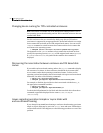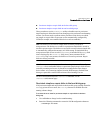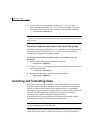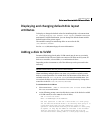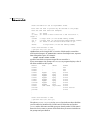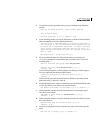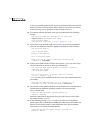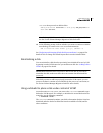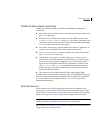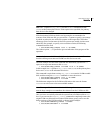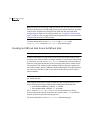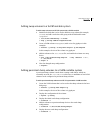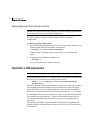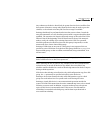
102 Administering disks
Rootability
Note: If you are adding an uninitialized disk, warning and error messages are
displayed on the console during the
vxdiskadd command. Ignore these
messages. These messages should not appear after the disk has been fully
initialized; the
vxdiskadd command displays a success message when the
initialization completes.
The interactive dialog for adding a disk using vxdiskadd is similar to that for
vxdiskadm, described in “Adding a disk to VxVM” on page 97.
Rootability
Rootability indicates that the volumes containing the root file system and the
system swap area are under VxVM control. Without rootability, VxVM is usually
started after the operating system kernel has passed control to the initial user
mode process at boot time. However, if the volume containing the root file
system is under VxVM control, the kernel starts portions of VxVM before
starting the first user mode process.
Under HP-UX, a bootable root disk contains a Logical Interchange Format (LIF)
area. The LIF LABEL record in the LIF area contains information about the
starting block number, and the length of the volumes that contain the stand
and root file systems and the system swap area. When a VxVM root disk is
made bootable, the LIF LABEL record is initialized with volume extent
information for the stand, root, swap, and dump (if present) volumes.
See “Setting up a VxVM root disk and mirror” on page 104 for details of how to
configure a bootable VxVM root disk from an existing LVM root disk.
Note: From the AR0902 release of HP-UX 11i onward, you can choose to
configure either a VxVM root disk or an LVM root disk at install time. See the
HP-UX Installation and Configuration Guide for more information.
See the chapter “Recovery from Boot Disk Failure” in the Veritas Volume
Manager Troubleshooting Guide, for information on how to replace a failed boot
disk.



